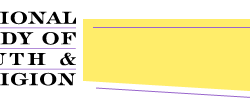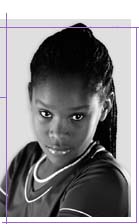|
Thomas, H. 2025. "History of Childhood Maltreatment Increased Risk of Depression in Adolescents and Young Adults... Commentary on Brown J, Cohen P, Johnson J.G., et al. Childhood Abuse and Neglect: Specificity of Effects on Adolescent and Young Adult Depression and Suicidality. J Am Acad Child Adolesc Psychiatry 1999 Dec;38:1490-6." Evidence Based Nursing vol. 3, p. 87.
Abstract: Questions: Does a history of childhood abuse and neglect increase risk of depressive disorders and suicidal behaviour in adolescents or young adults? Does this risk differ by type of maltreatment (ie, physical abuse, sexual abuse, or neglect)? Design: Population based cohort study beginning in 1975, with follow up in 1992. Setting: 2 counties in upstate New York, USA. Participants: 639 youths (52% men) who were > 18 years of age for whom information about child maltreatment was available from state records. Assessment of risk factors: Data on child maltreatment were obtained from the New York State Central Registry for Child Abuse and Neglect and from retrospective self reports during the 1992 follow up. Data were also collected on the following contextual factors: sex, ethnicity, IQ, difficult childhood temperament, low maternal education, low maternal self esteem, maternal alienation, anger, dissatisfaction, external locus of control, sociopathy, serious maternal illness, low maternal and paternal involvement, low parental warmth, low religious participation, teenage mother when youth was born, single parenthood, welfare support, low family income, large family size, and poor marital quality. Main outcome measures: Depressive disorders, assessed using the National Institute of Mental Health Diagnostic Interview Schedule for Children with algorithms for DSM-III-R diagnoses, and self reported suicide attempts. Main results: 81 cases of child abuse and neglect were identified; 24 children (30%) had > 1 type of maltreatment. After adjustment for contextual factors, participants who had a history of maltreatment had an increased risk of major depressive disorder (OR 3.00, CI 1.43 to 6.33), dysthymia (OR 4.83, CI 1.89 to 12.44), and suicide attempts (OR 3.29, CI 1.94 to 16.74) compared with participants who had no history of maltreatment Adolescents had an increased risk of repeated suicide attempts (OR 30.29, CI 1.70 to 539.80). Participants who were sexually abused had the highest risk of major depressive disorder (OR 3.17, CI 1.04 to 9.56), dysthymia (OR 9.74, CI 2.79 to 34.27), suicide attempts (OR 5.71, CI 1.94 to 16.74), and repeated suicide attempts (OR 8.40, CI 1.86 to 38.06). Participants who were physically abused had an increased risk of depression during adulthood (OR 3.83, CI 1.38 to 10.58) and repeated suicide attempts during adolescence (OR 10.74, CI 1.06 to 108.72). Childhood neglect alone was not associated with depressive disorders or suicidal behaviour. Conclusions: History of childhood maltreatment increased the risk of depressive disorders and suicidal behaviour in adolescents and young adults, independent of contextual factors associated with maltreatment. Children who were sexually abused had higher risks of depressive disorders than those who were physically abused or neglected. [Source: CI]
Perkins, Daniel F. and Tom Luster. 1999. "The Relationship between Sexual Abuse and Purging: Findings from Community-Wide Surveys of Female Adolescents." Child Abuse and Neglect vol. 23, pp. 371-382.
Abstract: To examine the relationship between sexual abuse & bulimic behavior, namely purging, a contingency table chi-square test & a logistic regression analysis were conducted of questionnaire data from 7,903 female adolescents in a large midwestern state. Bivariate analyses indicated such a relationship, but did not remain significant when several other factors, including physical abuse, were included. Several individual (history of physical abuse & religiosity), familial (family support & parent-adolescent communication), & extrafamilial (other adult support) factors were significantly related to purging. [Source: SA]
Shillinglaw, Regina Dillingham. 1999. "Protective Factors among Adolescents from Violent Families: Why Are Some Youth Exposed to Child Abuse and/or Interparental Violence Less Violent Than Others?" Ph.D. Thesis, University of South Carolina, Columbia.
Abstract: The transactional model of development suggests that the development of violent behavior is the result of reciprocal processes between individual, family, and environmental variables, some of which increase the probability of violent behavior and some of which decrease the probability of violent behavior. The purpose of this study was to identify factors which are associated with less violent behavior among at-risk adolescents. The risk status of the participants was defined as being a victim of familial violence, a witness to familial violence, or both. In addition, the participants were juvenile delinquents which also placed them at risk for violent behavior. The following protective factors were examined: flexible temperament, positive mood, positive relationship with a non-parental adult, empathy, religious beliefs, cognitive ability, positive attitude toward school, approach-oriented temperament, high self-esteem, internal locus of control, and prosocial success. Data was obtained from 226 male adolescents committed to the Department of Juvenile Justice via self-report measures and file review. An analysis of covariance revealed that the protective factors which are significantly associated with lower levels of violence were: a withdrawal-oriented temperament, empathy, religious beliefs, and high self-esteem. Possible explanation of the findings and implications for future research are discussed. [Source: PI]
Gilman, Sander L. 1998. "Sibling Incest, Madness and the 'Jews'." Jewish Social Studies vol. 4, p. 157.
Abstract: Focuses on the history and philosophy of child abuse and the Jewish perception of sibling incest. Pathological relationship of the Jews to the economy and child abuse; Consideration of sibling incest as the highest form of sexual expression; Understanding of separation as sexual perversion; View of incest as a category of deviance in modern culture. [Source: AS]
Goodman, Gail S., Jodi A. Quas, Bette L. Bottoms, Jianjian Qin, Phillip R. Shaver, Holly Orcutt, and Cheryl Shapiro. 1997. "Children's Religious Knowledge: Implications for Understanding Satanic Ritual Abuse Allegation." Child Abuse and Neglect vol. 21, pp. 1111-1130.
Abstract: Examined the extent of children's religious, especially satanic, knowledge and the influence of children's age, religious training, family, and media exposure on that knowledge. Using a structured interview, 48 3- to 16-yr-old children were questioned about their knowledge of: (a) religion and religious worship; (b) religion-related symbols and pictures; and (c) movies, music, and television shows with religious and horror themes. Although few children evinced direct knowledge of ritual abuse, many revealed general knowledge of satanism and satanic worship. With age, children's religious knowledge increased and became more sophisticated. Increased exposure to nonsatanic horror media was associated with more nonreligious knowledge that could be considered precursory to satanic knowledge, and increased exposure to satanic media was associated with more knowledge related to satanism. The results suggest that children do not generally possess sufficient knowledge of satanic ritual abuse to make up false allegations on their own. [Source: PI]
Nagel, Deborah Eve. 1997. "Current Coping Styles and Psychological Adjustment among Sexually Abused and Non-Abused Adolescent Females." Ph.D. Thesis, The George Washington University.
Abstract: This study examined the role of current coping strategies in the psychological adjustment of a low socioeconomic status, ethnically diverse sample of adolescent females. Participants were part of a longitudinal research project examining the effects of childhood sexual abuse on long-term psychological and physiological development. Forty-two survivors of childhood sexual abuse and 42 non-sexually-abused participants were administered a self-report measure to assess coping strategies they employ to manage current stress. The questionnaire was derived from subscales of four existing coping measures. The coping strategies assessed were distancing, action/planning, social support, and turning to religion. Participants also assessed their current stress levels and rated their current psychological adjustment in terms of depressive and anxious symptomology and appraisals of their self-esteem. Findings indicated that the two groups did not significantly differ on measures of psychological adjustment or in their use of the four targeted coping strategies. Within the groups, there was no significant difference in the relative use of the four coping strategies. For both sexually abused and non-sexually abused adolescents, distancing was inversely related and action/planning was positively related to psychological adjustment. Reliance on social support was positively related to psychological adjustment for the abuse group and inversely related for the control group. Turning to religion was not significantly related to outcome for either group. In both groups, levels of perceived stress were inversely related to psychological adjustment regardless of the coping strategies employed. A possible explanation for the lack of differences between the abuse and non-abuse groups included high levels of non-sexual-abuse traumas experienced by the control group. Findings indicated the importance of the coping strategies of distancing, action/planning, and social support, as well as the importance of individuals' perceptions of their daily stress in psychological adjustment. These findings presented areas in which interventions can occur to reduce long-term effects associated with childhood trauma. [Source: DA]
Chandy, Joseph M., Robert W. Blum, and Michael D. Resnick. 1996a. "Female Adolescents with a History of Sexual Abuse: Risk Outcome and Protective Factors." Journal of Interpersonal Violence vol. 11, pp. 503-518.
Abstract: Examined the school performance, suicidal involvement, disordered eating behaviors, pregnancy risk, and chemical use of 1,011 female teenagers with a history of sexual abuse and a comparison group of 1,011 female teenagers without a background of abuse. Results show that abused Ss had higher rates of these adverse outcomes than nonabused Ss. Among abused Ss, protective factors against adverse outcome included a higher degree of religiosity, perceived health, caring from adults, living with both biological parents, and the presence of a clinic or nurse at school. Risk factors that increased the likelihood of adverse outcome included perceived substance use in school, mothers' use of alcohol, family stressor events during the past year, and worry about sexual coercion. [Source: PI]
Chandy, Joseph M., Robert W. Blum, and Michael D. Resnick. 1996b. "Gender-Specific Outcomes for Sexually Abused Adolescents." Child Abuse and Neglect vol. 20, pp. 1219-1231.
Abstract: Studied sex differences in outcomes related to school performance (SP), suicidal involvement (SI), disordered eating (DE), sexual risk taking (SRT), substance abuse and delinquency of 3,051 teenagers with a history of sexual abuse. Males (mean age 15.26 yrs) were found to be at higher risk than females (mean age 15.37 yrs) in poor SP, delinquency and SRT. Females showed higher risk for SI and DE, and more frequent use of alcohol, but males showed more extreme use of alcohol and more frequent and extreme use of marijuana. For females, protective factors against adverse correlates were higher emotional attachment to family, being religious or spiritual, presence of both parents at home and overall health perception. Augmenting factors were stressful school environment due to perceived high levels of substance use in and around school, worry of sexual abuse, maternal alcohol consumption, and physical abuse. For males, the protective factors were maternal education and parental concern. [Source: PI]
Chandy, Joseph M., Robert W. Blum, and Michael D. Resnick. 1996c. "History of Sexual Abuse and Parental Alcohol Misuse: Risk, Outcomes and Protective Factors in Adolescents." Child and Adolescent Social Work Journal vol. 13, pp. 411-432.
Abstract: Examined the factors of school performance, suicidal involvement, disordered eating behaviors, pregnancy risk, and chemical use among 1,959 teenagers with a history of sexual abuse or parental alcohol misuse. It was found that Ss had higher rates of adverse outcomes than among a comparison group of teenagers without such background risk factors. Adolescents with dual-risk background reported higher levels of suicide risk, disordered eating, sexual behaviors, and chemical abuse than did Ss with only one background risk factor. Among index group members, protective factors against adverse outcomes included a high degree of religiosity and the ability to discuss problems with family or friends. Risk factors that increased the likelihood of adverse outcomes included depression, perceived substance use in school, and worries about family financial security. [Source: PI]
Alexander, Hanan A. (ed.). 1994. "Religious Education and Child Abuse." Religious Education vol. 89, pp. 458-592.
Abstract: Cease Fire! Stopping the Gun War Against Children in the United States, by M Edelman. Faith on the Loose: Russia's New Experience of Religious Freedom, by J Lucinio. Ida, The Subway Station, and Thinking About Learning, by K Anderson. God in the Inner City, by C Johnson. For the Life of a Child: The "Religious" in the Education of the Public, by C Foster, R O'Gorman, and J Seymour. Educating Children Spiritually and Psychologically, by M Kelsey. Keeping Faith with God and Our Children: A Practical Theological Perspective, by J Fowler. Strategies to Halt Violence Against American Youth: Too Late, Too Soon, by P McLaren. The Role of Educators in Combatting Violence, by N Noddings. Serving Idols or Faithfulness: Will We Heed Marian Wright Edelman's Call?, by P O'Hare. Using the Tools of Contestation: A Response to Marian Wright Edelman's "Cease Fire," by M Warren. Response to "For the Life of a Child," by C Martinez Estrada. Response to "For the Life of a Child," by D Heischman. Response to "For the Life of a Child," by R Novak. [Source: RI]
Rew, L. and P. Shirejian. 1993. "Sexually Abused Adolescent: Conceptualization of Sexual Trauma and Nursing Interventions." Journal of Psychosocial Nursing & Mental Health Services vol. 31, pp. 29-33.
Abstract: Many adolescent victims of sexual abuse display symptoms that reflect alterations in individual coping and thought processes, social isolation and impaired verbal communication, and alterations in spiritual well-being. Nursing interventions based on a multidimensional model of sexual trauma focus on helping the adolescent learn to plan and carry out activities within a safe environment to improve a sense of self, improve interpersonal relationships, and decrease spiritual isolation and hopelessness. Nursing interventions are designed to assist the adolescent to integrate past experiences, including memories and feelings, with current decisions to engage in self-protective and health-promoting behaviors. [Source: CI]
Capps, Donald. 1992. "Religion and Child Abuse: Perfect Together." Journal for the Scientific Study of Religion vol. 31, pp. 1-14.
Abstract: This 1991 Presidential Address to the Society for the Scientific Study of Religion centers on religious legitimations for the physical punishment & emotional tormenting of children by parents & other adults, who maintain that physical punishment is a means to break the natural will of the child so that the child will be conformed to the will of God. Parents contend that they are punishing their child in God's behalf, while children appeal to God to save them from punishment inflicted by their parents. Recent empirical research suggests that physical punishment succeeds in the internalization of a loving God. However, there is little evidence to support the claim that physical punishment leads to improved behavior; on the contrary, children are likely to continue to disobey their parents as this is a means to effect a punishment in which the parents' & God's love is reaffirmed. Religious beliefs & ideas that torment children because children do not have the capacity to put such ideas in a meaningful context or to dismiss these ideas as lacking merit are also examined, showing how beliefs that evoke fear & that demonstrate the child's incompetence (eg, prayers that fail to save the life of a relative or friend) are especially tormenting. There is a tendency for adults who, as children, were exposed to such religious ideas to view religion from a detached & neutralized perspective; eg, the virginal conception of Jesus, widely taught in Christian churches, effectively denies Jesus's own childhood trauma & desensitizes adults from childhood traumas, including their own. If religion is strongly associated with child abuse, it is also strongly associated with the protection of children from those who would abuse them in the name of religion. The prophets of Israel & Jesus himself are cited as allied with those religionists who seek to break the vicious cycle of child abuse. [Source: SA]
Johnson, W. Brad and Mark C. Eastburg. 1992. "God, Parent and Self Concepts in Abused and Nonabused Children." Journal of Psychology and Christianity vol. 11, pp. 235-243.
Giller, Betsy. 1990. "All in the Family: Violence in the Jewish Home." Women and Therapy vol. 10, pp. 101-109.
Abstract: Discusses a study of Jewish family violence (JFV [B. Giller and E. Goldsmith, 1980]) based on a survey of active members of a number of synagogues. From 209 respondents, a total of 22 spousal abuse and 118 child abuse cases were revealed. Four cases of sexual abuse and 11 cases of social isolation were also reported. It is suggested that the Jew in American society functions with conflicting standards regarding the family. This conflict contributes to the existence of JFV and to the difficulty in acknowledging that such violence exists. JFV will continue as long as institutions both within and beyond the Jewish community perpetuate myths about women, Jewish women, and Jewish families. Suggestions for therapy, interventions, and services are discussed. [Source: PI]
Pantle, Mark L. and Sherry L. Oegema. 1990. "Sexual Abuse and Depression in an Adolescent Female Inpatient Population." Journal of Psychology and Christianity vol. 9, pp. 55-63.
Abstract: Among 111 adolescent female inpatients, 35 had a documented history of sexual abuse. Abused and nonabused Ss did not differ significantly in frequency of diagnosis of depressive disorder, nor did they differ on any of the 11 scales of a self-report depression instrument, the Multiscore Depression Inventory. Within the sexually abused group, duration of abuse and the family's reaction to disclosure of the abuse were significantly related to self-esteem and sociability. A long duration of abuse also was associated with cognitive difficulty, sad mood, and a higher overall depression score. Type of abuse, age at the time of the abuse, relationship of the perpetrator to the victim, belief in God, and church attendance were not significantly related to depression in the sexually abused group. [Source: PI]
|



